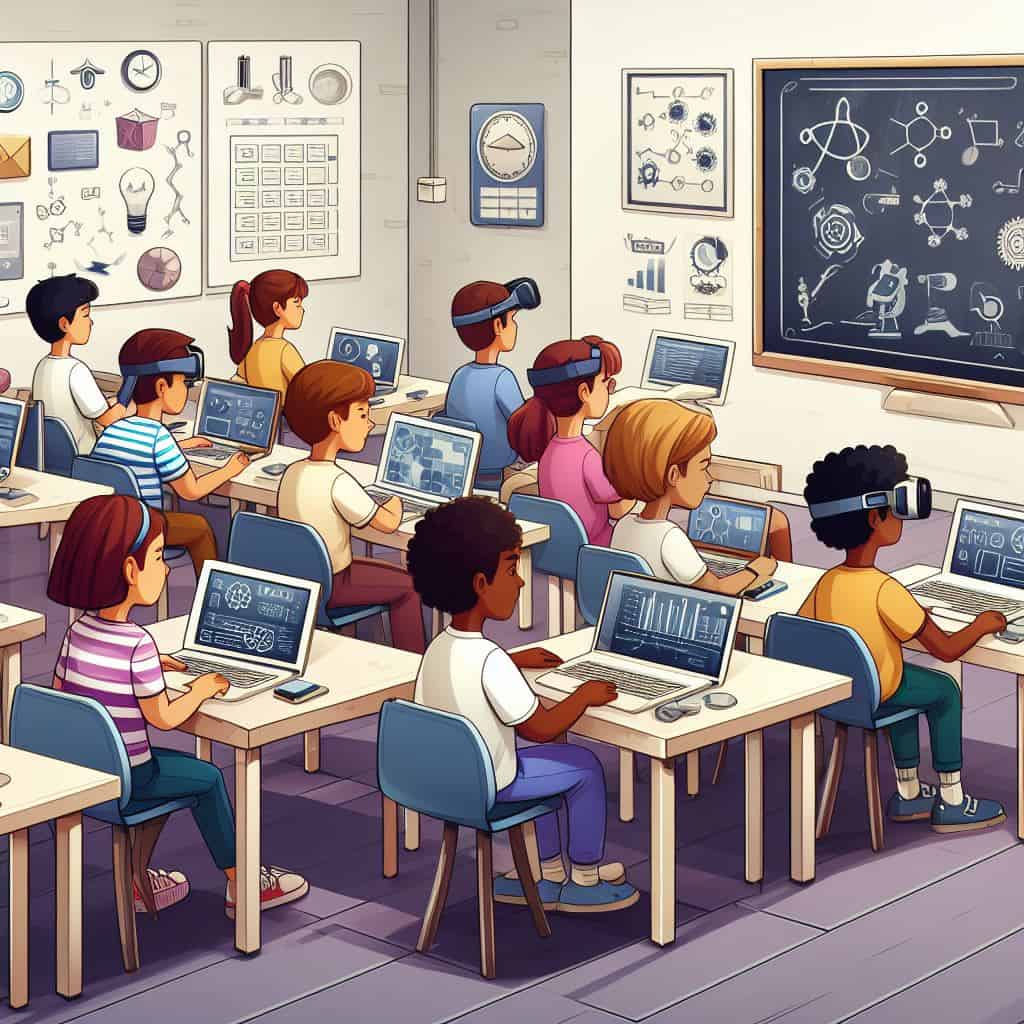Blitz News Digest
Stay updated with the latest trends and insights.
Education Technology: Where Play Meets Learn
Discover how innovative education technology transforms learning through play, boosting engagement and creativity. Join the revolution today!
The Benefits of Gamification in Education: Why Learning Through Play Matters
The concept of gamification in education integrates game design elements into learning environments, making the educational experience more engaging and interactive. By incorporating elements such as points, levels, badges, and leaderboards, educators can motivate students to participate actively in their learning process. This approach not only enhances student engagement but also nurtures a sense of achievement and accomplishment, encouraging learners to push their boundaries and strive for mastery. The immersive aspect of gaming fosters an environment where students feel safe to experiment, make mistakes, and learn through failure, which is crucial for deep understanding and retention of knowledge.
Furthermore, gamification promotes collaboration and healthy competition among students. Through team-based challenges and interactive activities, learners can develop critical social skills such as teamwork, communication, and problem-solving. This collaborative learning environment nurtures a sense of community and motivates students to support each other in their academic journeys. Additionally, gamification caters to various learning styles, making it easier for both visual and kinesthetic learners to engage with the material effectively. As educational institutions increasingly embrace this innovative approach, it becomes clear that learning through play not only makes education enjoyable but also significantly enhances the overall learning experience.

Top 10 Educational Tech Tools That Make Learning Fun
In today's digital era, incorporating technology into education can transform the learning experience and make it more engaging for students. Here are the Top 10 Educational Tech Tools That Make Learning Fun:
- Kahoot! - A game-based learning platform that allows educators to create quizzes that students can answer in real-time.
- Nearpod - This interactive tool helps teachers create engaging lessons by integrating polls, quizzes, and multimedia presentations.
- Quizlet - A flashcard app that enables students to study various subjects using creative and customizable study sets.
- Flipgrid - A video discussion tool that encourages students to express their thoughts and ideas through short videos.
- Padlet - An online bulletin board that allows students to collaborate on projects by sharing ideas, images, and links.
These tools not only enhance classroom engagement but also encourage collaboration and creativity among students. Continuing with our list of the Top 10 Educational Tech Tools That Make Learning Fun:
- Seesaw - A student-driven digital portfolio that empowers students to document and share their learning.
- Scratch - A coding platform that introduces students to programming through creating games and animations.
- Edmodo - A social learning network that connects teachers, students, and parents, facilitating resource sharing and communication.
- BrainPOP - An educational website that features animated movies and quizzes on various subjects to engage students.
- ClassDojo - A classroom management tool that promotes positive behavior and communication between teachers and parents.
How Interactive Learning Environments Enhance Student Engagement
Interactive learning environments play a crucial role in enhancing student engagement by fostering a sense of participation and collaboration. Unlike traditional instructional methods, these environments encourage students to actively participate in the learning process. Through tools such as multimedia presentations, simulation games, and collaborative projects, students are not only recipients of knowledge but also contributors to their educational experience. This shift from passive learning to active involvement motivates students to explore concepts more deeply, leading to better retention and understanding.
Furthermore, interactive learning environments promote critical thinking and problem-solving skills. When students engage in group discussions or tackle real-world challenges, they develop the ability to analyze information from different perspectives. Consider the following benefits of interactive learning:
- Enhanced Motivation: Students are more likely to be interested in subjects that allow for exploration and creative expression.
- Increased Collaboration: Working in teams helps students build communication skills and learn from their peers.
- Immediate Feedback: Interactive tools often provide instant assessments, allowing students to recognize and address their misconceptions promptly.
In conclusion, by integrating interactive elements into education, teachers can create a dynamic atmosphere that nurtures student engagement and enriches the learning experience.